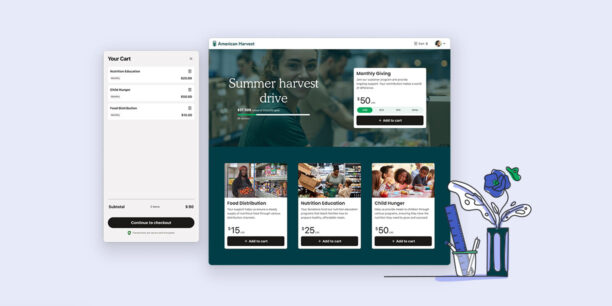How to Maximize Employee Giving Revenue: Matching Gifts and More

Request a Demo
Learn how top nonprofits use Classy to power their fundraising.
This blog was written in collaboration with Adam Weinger, President of Double the Donation and a leading expert on corporate giving programs. In addition to Double the Donation’s blog, Adam is a frequent contributor to many leading nonprofit magazines and publications.
Companies continue to roll out employee-giving programs that encourage charitable giving, fuel corporate social responsibility (CSR) programs, and support the causes that matter to their employees.
These generous philanthropy initiatives offer nonprofits and other fundraising groups a powerful opportunity to amplify their giving campaigns. Powered by individual employees, these programs are some of the most universally accessible forms of corporate giving an organization can target.
This article will review how nonprofit organizations maximize funding from employee giving and matching gift fundraising. We’ll review the basics and dive into several tried-and-true best practices for making the most of tax-deductible donations.
Maximize Matching Gifts with Classy and Double the DonationWhat Is Employee Giving?
Employee giving refers to a company or its employees donating money, time, or resources to charitable causes or organizations. Companies often facilitate these initiatives as part of their CSR efforts, fostering a sense of community engagement and social impact within the workplace.
The benefits of employee giving programs are widespread and inclusive of each party involved:
- Businesses: Increased engagement and productivity among staff, reduced turnover and hiring costs, and enhanced reputation among consumers
- Employees: Heightened potential to make a larger impact on their favorite philanthropy programs and engage their employers in doing good
- Nonprofits: Enhanced supporter engagement with increased individual donor conversion rates and larger average gift sizes—plus additional resources and revenue
Employee giving can take various forms, including donation-matching (or corporate matching gifts), volunteer grants (“dollars for doers”), other employee volunteerism programs, in-kind gifting, payroll deductions, and more. While there are many examples we could list, a few leading giving programs include:
- Microsoft’s matching gifts program: Microsoft boasts one of the highest engagement rates for its employee giving programs, with more than 65% of team members involved. Each year, Microsoft encourages full-time and part-time employees to give and request donation matches of up to $15,000 per person to nearly any nonprofit cause.
- The Walt Disney Company’s VoluntEars program: Disney offers a matching gift program (matching gifts between $25 and $25,000 at a one-to-one rate) and a volunteer grant program. Through the latter, employee volunteers can apply for an EARS to You grant of up to $2,000 for the nonprofit of their choice. The company also offers dedicated VoluntEARS of the Year grants (typically an additional $2,500) to recognize exceptional volunteers.
The corporate giving landscape continues to expand, with new companies rolling out employee matching and volunteering programs daily. An estimated 39% of companies plan to expand their employee-giving initiatives in the next two years.
5 Ways to Increase Employee Giving and Matching Gifts for Your Nonprofit
While employee giving can take various forms, the most widely available type of program (with one of the most significant returns on investment) is employee matching gifts. As a result, we wanted to cover these programs in greater depth and share expert-proven tips and tricks for making the most of these—along with other workplace giving programs.
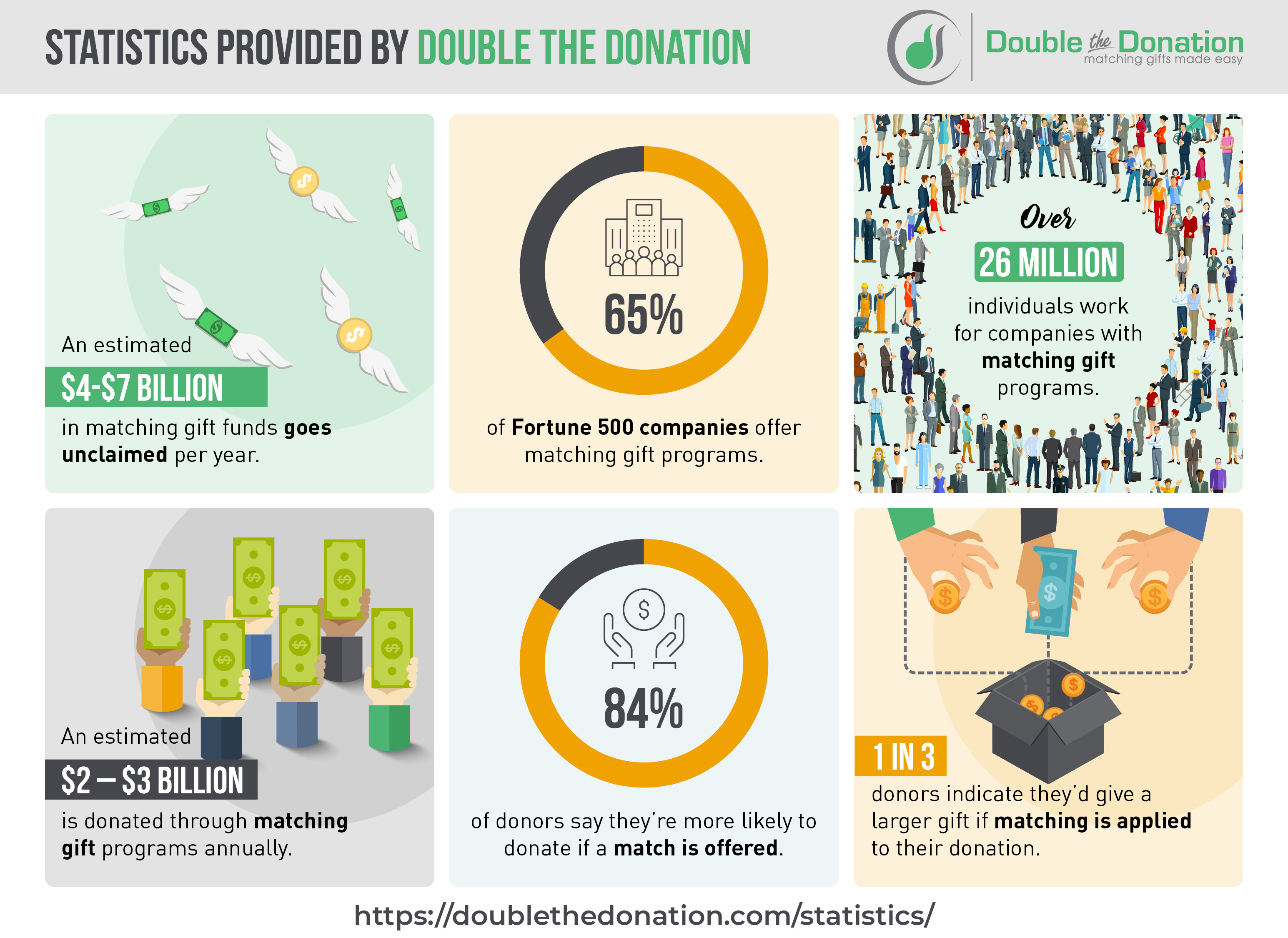
1. Incorporate Matching Gifts in the Donation Process
Integrating employee giving directly within the donation process is an excellent way to increase employee engagement and enhance your organization’s fundraising. As they give, donors are typically at their highest engagement level. Thus, promoting matching gift opportunities at this time increases the likelihood that supporters participate in their companies’ giving programs.
There are a few key ways to accomplish this. First, consider adding a quick blurb about matching gifts on your donation site. It can be as simple as “See if your employer will match your gift!” above an optional employment data field. Additionally, a matching gift search tool, such as Double the Donation, can be embedded in Classy donation forms as such:
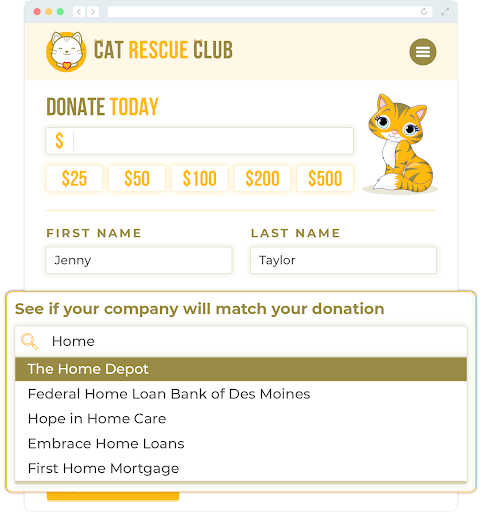
You’ll also want to promote matching gifts on the confirmation page after submitting a donation. For the best results, present donors with company-specific criteria, such as minimum and maximum donation amounts, match ratios, and links to online submission forms:
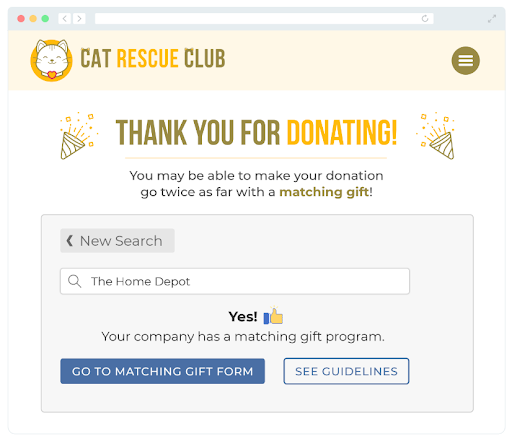
Providing this information allows each supporter to receive a detailed program overview and follow the suggested next steps after they give to increase their overall impact with employee giving immediately.
2. Spread the Word about Employee Giving Opportunities
Since donors may be unfamiliar with employee-giving programs and often lack knowledge of their eligibility, spreading the word about the opportunity is essential. After years of supporting thousands of nonprofits, Double the Donation found that low donor awareness is one of the most prominent hurdles organizations must overcome to maximize employee giving campaigns.
Luckily, there are many benefits to informing donors about matching gifts specifically. For example, research indicates that mentioning matching gifts in a fundraising appeal results in a 71% increase in response rate and a 51% increase in the average donation amount.
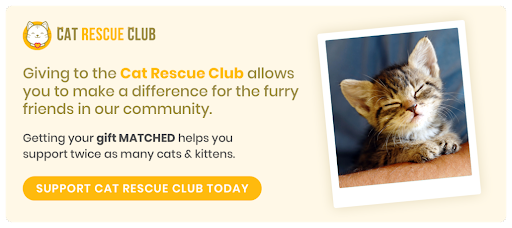
Establishing a dedicated employee giving or matching gifts page on your nonprofit website can also go a long way in providing education. Ideally, an employee giving page should highlight available opportunities and house the information a donor needs to get started in a centralized, accessible location.
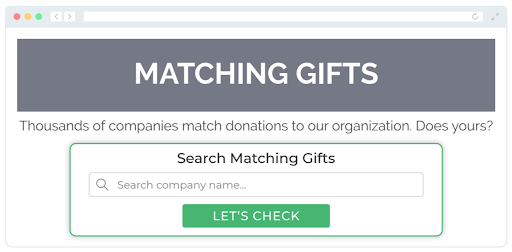
This resource should include:
- Definitions of employee giving, matching gifts, volunteer grants, and other relevant program types
- An overview of how employee giving programs support your organization’s mission impact (the more tangible examples you can provide, the better!)
- Breakdowns of the elements commonly found in employee giving guidelines (such as donation minimums and maximums, matching gift ratios, qualifying employees and causes, submission deadlines, and more)
- Examples of companies offering matching gift programs (or an embedded matching gift database search tool)—along with suggested next steps a donor can take if they don’t find their company
- An explanation of how ineligible donors can advocate for a matching gifts program to a nonparticipating employer (including a helpful email template)
- The basic steps for submitting a matching gift request to a donor’s employer
Then, you can drive traffic to your dedicated matching gifts page by implementing an innovative social media strategy. This empowers your team to share critical employee giving and matching gift information while leveraging the widespread reach of online networking sites.
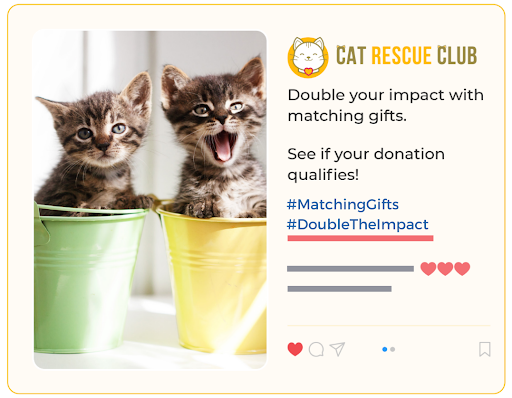
Use social media to pique your supporters’ interest in employee giving, then direct them back to your matching gifts page to learn more. Engaging with your audience through online channels like LinkedIn, Facebook, X (formerly called Twitter), and more allows your team to drive awareness of the charitable giving opportunity and empower your audience to get involved.
3. Implement Timely Employee Giving and Matching Gift Appeals
Timing is critical to any organization’s successful employee-giving-related outreach. Workplace giving can generally fall into two categories: year-round initiatives (such as a company that matches gifts on an annual rolling basis) or time-based efforts (such as a month-long internal fundraising campaign for a chosen nonprofit).
Well-timed communication is essential regardless of the employee-giving initiative you’d like to pursue. For example, you might configure individual email follow-ups (between two and 24 hours after the initial donation) to remind donors about matching gift opportunities. You can tailor your messaging to reflect a specific company’s programming if you have employment information (such as the data previously collected during the giving process).
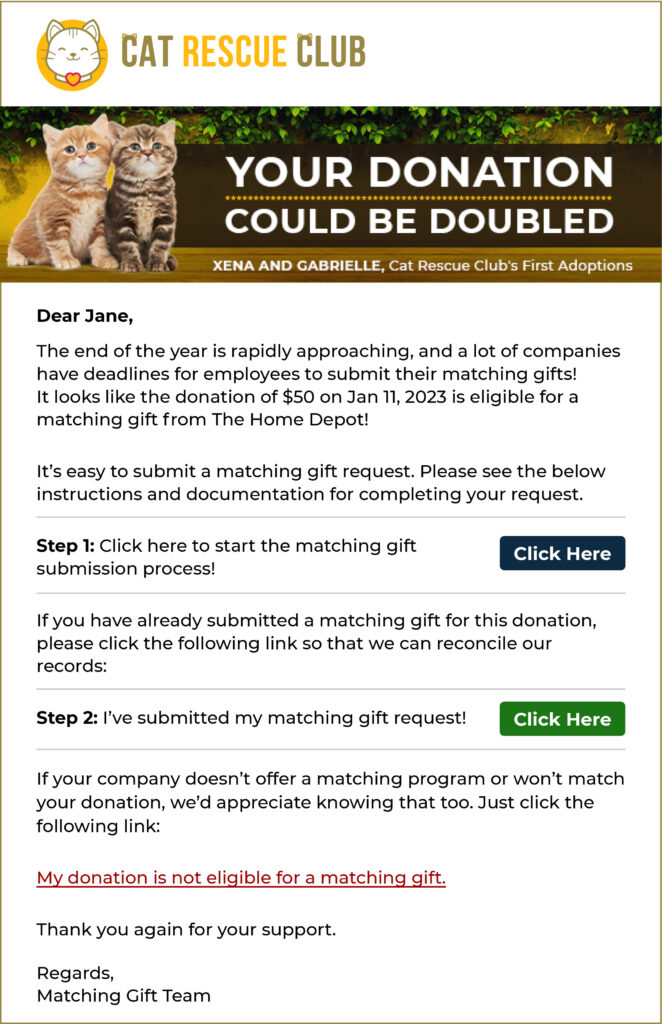
From there, consider incorporating matching gifts into your seasonal or time-sensitive campaigns, such as disaster relief efforts or cause-awareness-day campaigns.
Of course, one of the best times to mention matching gifts is during the year-end giving season. That’s because previously on-the-fence donors are more likely to contribute when they know a match is available. At the same time, existing donors can get involved by doubling their previous gifts, allowing them to amplify their impact on your cause without reaching back into their wallets.

Many companies close their employee-giving request windows at the end of the calendar year. Leveraging year-end momentum—and communicating the reason behind your urgency—can drive unclaimed matches to completion before it’s too late.
4. Pursue One-Off Employee Giving Partnerships
Unfortunately, not all businesses offer employee-giving programs, and some of your donors will likely fall into this category. However, working with a company to develop a one-off (or exclusive-to-you) giving partnership can lead to a wealth of mutually beneficial opportunities.
Here’s how this works: A company agrees to match its staff donations to a single, predetermined nonprofit in a one-off employee-giving partnership. It then establishes program criteria, including minimum and maximum match amounts, ratios, deadlines, and more.
When the program is live, the company encourages its employees to give to the organization over a set period. After the campaign, the one-off matcher contributes an amount equal to (or sometimes greater than) the sum of all qualifying employee donations.
We recommend enlisting your matching gift software to source partners with the most significant potential. 360MatchPro’s Top Companies tool makes it easy to identify prevalent employers in your donor base that don’t currently match gifts.
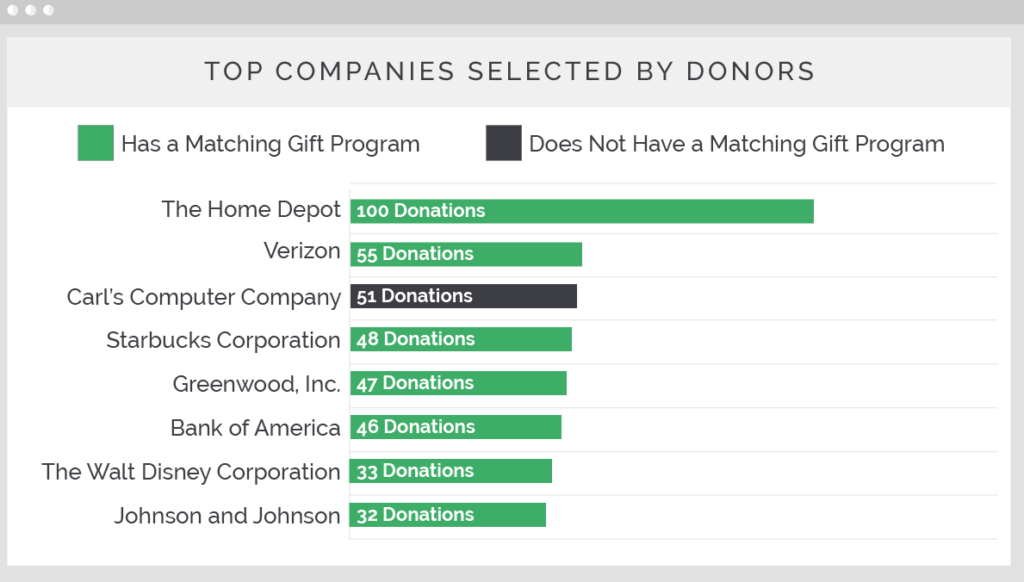
Then, prepare a proposal, communicate the value of matching gifts to prospective companies, and pitch the idea to possible partners in your network.
5. Make the Most of Automation with Employee-Giving Software
Leveraging the right software can streamline your efforts to encourage employee giving and matching gift participation among your donors. Luckily, it’s quick and easy to integrate 360MatchPro’s matching gift automation system with your Classy fundraising solution.
Thanks to an innovative partnership with Double the Donation, the database tool collects employment information from donors and filters each record into an appropriate email stream based on match eligibility.
From there, 360MatchPro tracks donations through the matching gift lifecycle, supplying actionable insights—including the number of match-eligible donations, submitted match requests, and total revenue collected in matching gifts—in an easy-to-understand way.
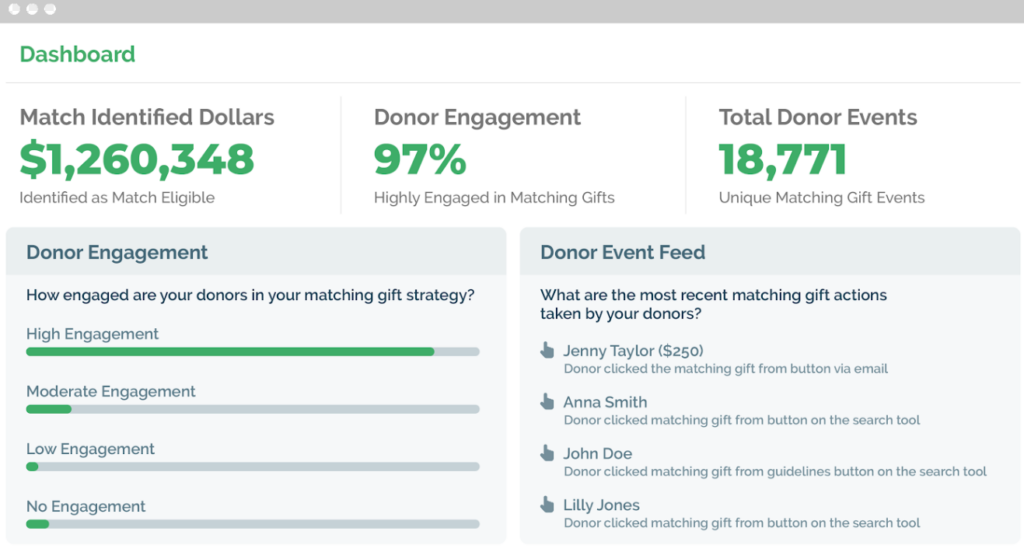
Realize the True Potential of Matching Gifts through Employee Giving
Employee giving can supercharge your nonprofit’s fundraising and engagement strategies. For organizations seeking to boost their revenue (and impact), harnessing the potential of matching gifts and exploring additional employee-giving avenues is crucial.
By leveraging the right software, adopting seamless integrations, and implementing the best practices outlined above, your organization can relax and watch the matching gifts and volunteer grants come in.
Copy Editor: Ayanna Julien

Raise More with Employee Matching on Classy
Subscribe to the Classy Blog
Get the latest fundraising tips, trends, and ideas in your inbox.
Thank you for subscribing
You signed up for emails from Classy
Request a Demo
Learn how top nonprofits use Classy to power their fundraising.
 Explore Classy.org
Explore Classy.org 

